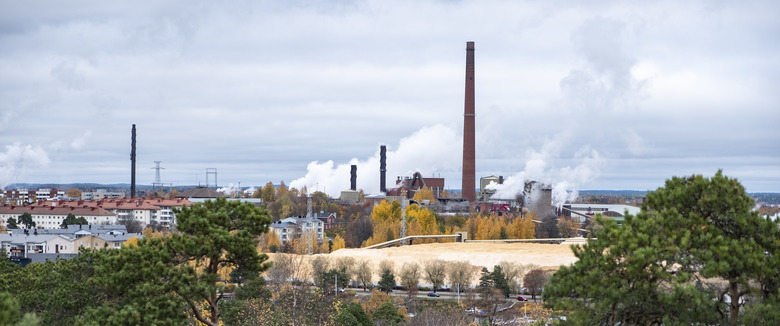Why Is Smog Bad?
According to University of California at Berkeley, smog is a mixture of gases that produces air pollution. At its worst, it is poisonous to human beings. In cities, industrial activities result in industrial smog and vehicular emissions create photochemical smog. This causes health problems in human beings and affects plants adversely.
Formation of smog
Formation of smog
The burning of fossil fuels to generate power (heat or electricity) creates sulfur dioxide. It's yhe main pollutant emitted by these industries and it causes industrial smog.
Automobile exhausts, tree burning and agricultural organic wastes lead to emissions of the pollutants such as volatile organic compounds (VOCs) and nitrogen oxides. These pollutants interact with sunlight to form photochemical smog, of which ozone is a main component.
Effects
Effects
According to the Ministry of the Environment (Ontario), asthma sufferers are most likely to be harmed by smog. Ground-level ozone and particulates can aggravate symptoms or trigger an asthma attack. Smog is also harmful to elderly people who suffer from chronic obstructive pulmonary disease, heart disease, emphysema, bronchitis or hardened arteries. Nitrogen oxide reduces human resistance to infections and can induce heart and lung problems. Ozone and peroxyacetyl nitrate (PAN) causes coughing, eye irritation and respiratory problems
Effect on Children
Effect on Children
Children are at a even higher risk because they breathe more rapidly than adults and therefore take in more of any bad air. Moreover, in summer they tend to spend a lot of time outdoors.
Effect on Plants
Effect on Plants
According to Australia's Environmental Protection Agency, gases such as nitrogen oxides, ozone and peroxyacetyl nitrate (PAN), which are main components of air pollutants, can have harmful effects on plants. They inhibit the primary process of photosynthesis in plants which can stop or reduce growth in plants. PAN is more toxic to plants than ozone.
Effect on Materials
Effect on Materials
Smog can have adverse effects on materials as well. Ozone, a main part of photochemical smog, can cause rubber to crack and damage outdoor artworks. It can reduce the tensile strength of textiles and cause dyed fibers to fade.
Cite This Article
MLA
Sen, Debashree. "Why Is Smog Bad?" sciencing.com, https://www.sciencing.com/about-6602730-smog-bad-/. 22 November 2019.
APA
Sen, Debashree. (2019, November 22). Why Is Smog Bad?. sciencing.com. Retrieved from https://www.sciencing.com/about-6602730-smog-bad-/
Chicago
Sen, Debashree. Why Is Smog Bad? last modified March 24, 2022. https://www.sciencing.com/about-6602730-smog-bad-/
